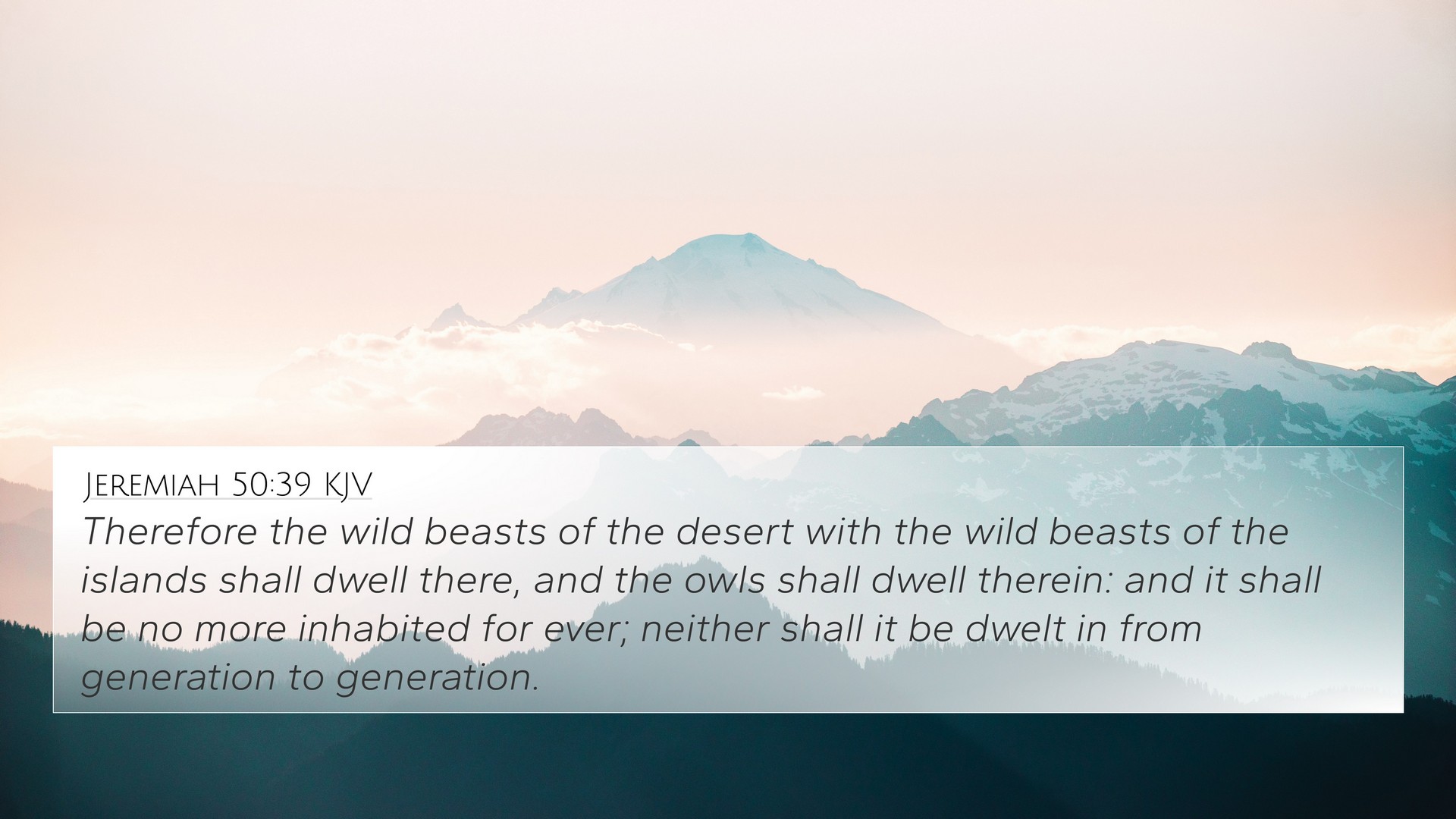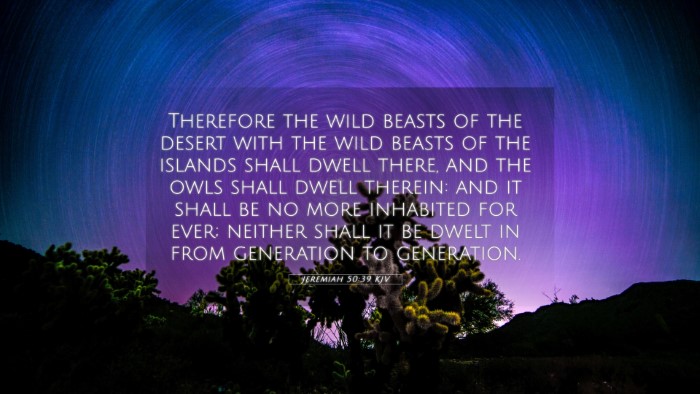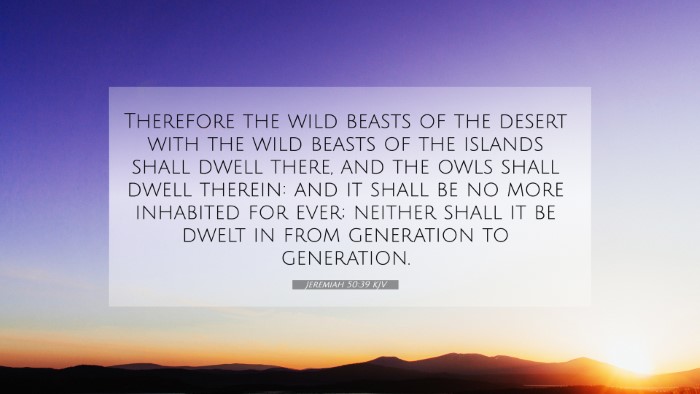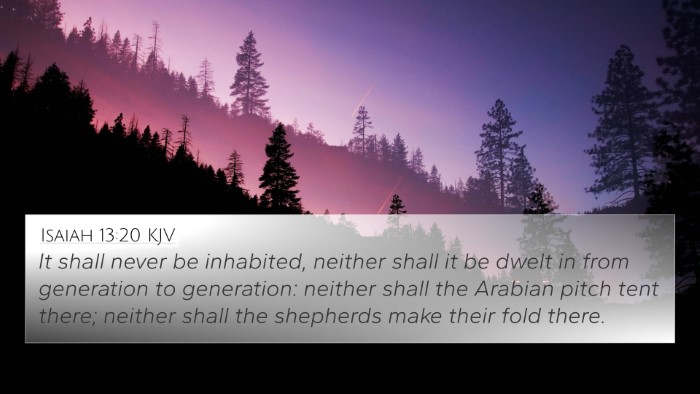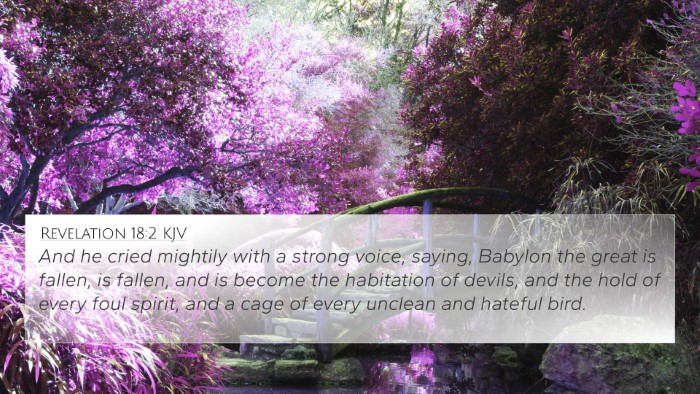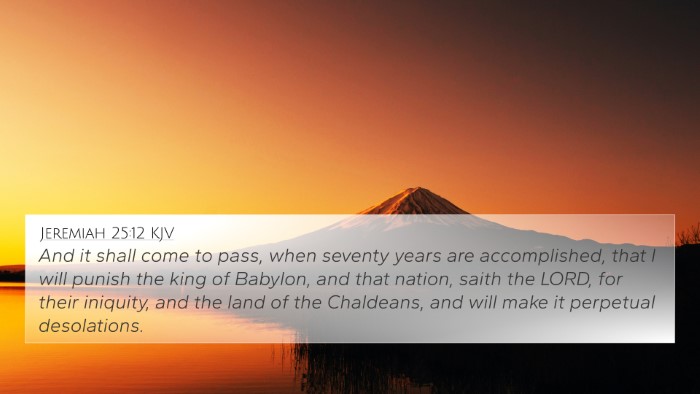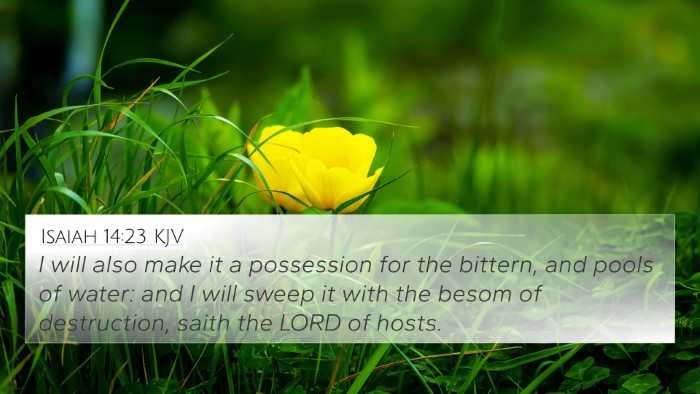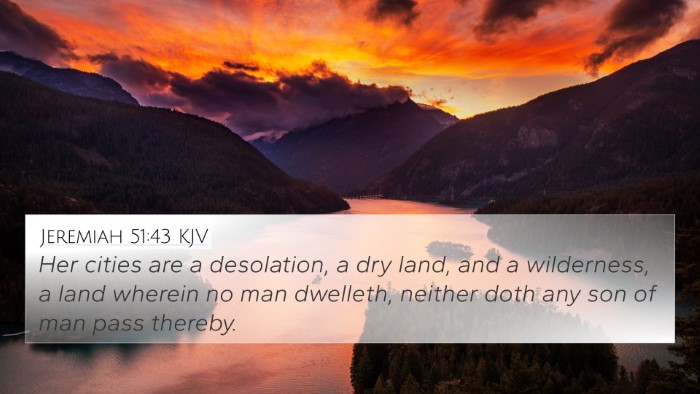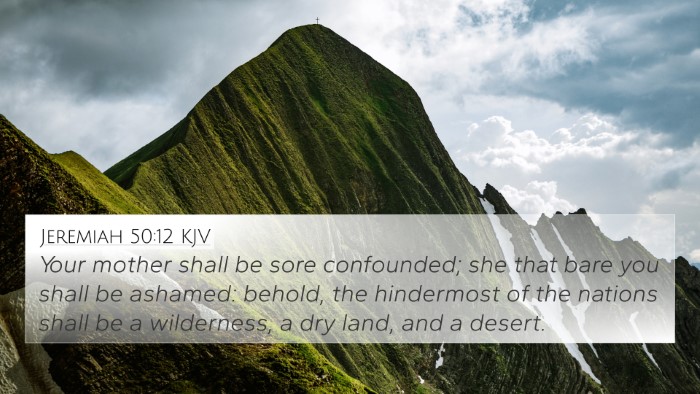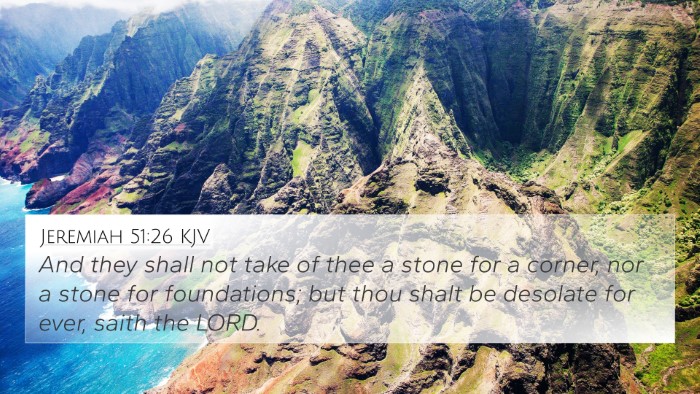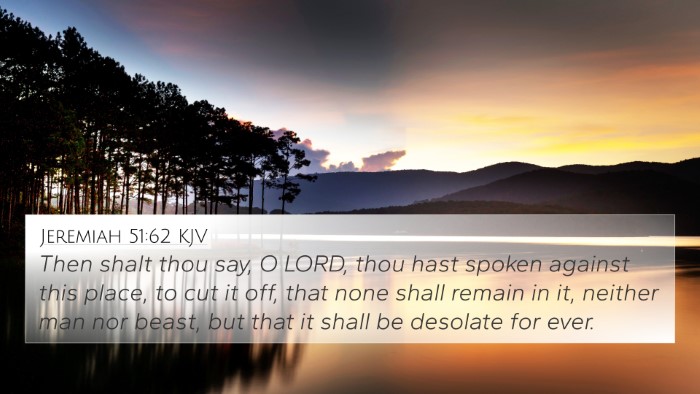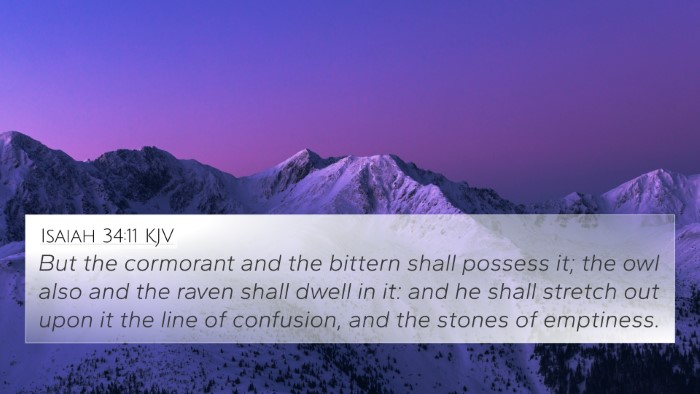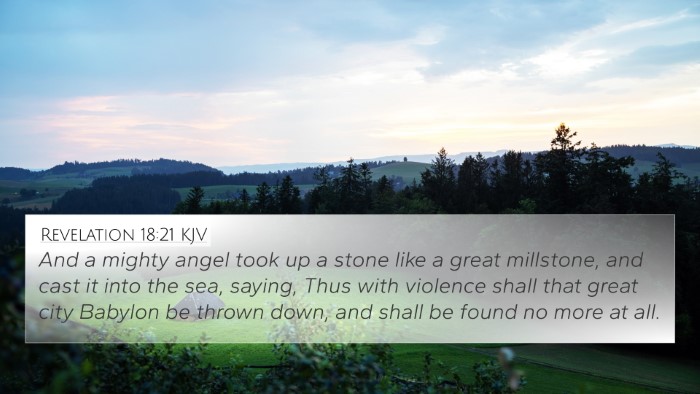Understanding Jeremiah 50:39
Jeremiah 50:39 states, "Therefore the wild beasts of the desert with the wild beasts of the islands shall dwell there, and the ostriches shall dwell therein: and it shall be no more inhabited for ever; neither shall it be dwelt in from generation to generation." This verse communicates the desolation that will befall Babylon after its fall, presenting powerful imagery to convey the totality of its destruction.
Interpretation and Meaning
This prognosis highlights several critical themes in the biblical narrative and prophetic literature, particularly within the Book of Jeremiah, a book well-known for its rich content of judgment and hope. The commentary insights from public domain sources elucidate these themes as follows:
-
Divine Judgment:
Both Matthew Henry and Albert Barnes emphasize that this verse shows God's judgment upon Babylon due to its sins. As Matthew Henry explains, the use of desert imagery denotes the complete abandonment and forsaking of what was once a flourishing empire, now reduced to a wasteland.
-
Fulfillment of Prophecy:
Adam Clarke remarks that the desolation reflects the fulfillment of prophecy concerning Babylon’s fall. The desolate beasts symbolize not only the physical ruin but also the spiritual desolation, echoing the idea that God will execute His will regardless of human plots.
-
Judgment on Idolatry:
This verse connects to the broader themes of Babylon's idolatry and the inevitable consequences of turning away from God. The description of desolation serves as a reminder of the futility of false gods and the destruction that follows due to their worship.
-
Separation from God:
The imagery of ostriches and wild beasts indicates a complete separation from God's favor. Both Barnes and Clarke highlight that this separation is indicative of more than physical absence; it represents a spiritual estrangement from God’s presence.
Bible Verse Cross-References
To deepen the understanding of Jeremiah 50:39, it is essential to consider its connections to other Bible verses that discuss themes of desolation, judgment, and restoration.
- Isaiah 13:19-22: This passage also prophesies the destruction of Babylon and uses similar imagery of desolation and wild animals inhabiting the ruins.
- Revelation 18:2: This verse describes Babylon's fall in apocalyptic terms, paralleling the message of Jeremiah concerning ruin and judgment.
- Jeremiah 51:37: Further details on the destruction of Babylon, emphasizing that the city will become a dwelling place for unclean creatures.
- Micah 1:8-9: This reflects the desolation and mourning over cities, embodying the parallels found in Jerusalem and Babylon.
- Ezekiel 26:19-21: Predicts the destruction of Tyre, similar in tone to the judgment against Babylon, showing God's sovereignty over all nations.
- Amos 9:2-4: Illustrates the certainty of God's judgment and how no one can escape it, reinforcing the themes in Jeremiah's warnings.
- Matthew 24:2: Indicates Jesus’ prophecy concerning the destruction of the temple in Jerusalem, shedding light on God's judgment across generations.
Thematic Connections
Jeremiah 50:39 serves as a cornerstone for understanding the wider biblical themes of divine retribution and eventual restoration. The parallels drawn from these referenced scriptures provide a broader narrative of God's promises, judgment, and hope.
Conclusion
In summary, the insights drawn from resources like Matthew Henry, Albert Barnes, and Adam Clarke reveal that Jeremiah 50:39 reflects a deep and multifaceted understanding of God's nature—His judgment, His sovereignty, and His ultimate restoration plans. By utilizing tools for Bible cross-referencing, readers can identify connections between these verses, enhancing their study and comprehension of biblical themes profoundly.
Engaging with the thematic verse connections within the Bible can cultivate a richer understanding of scripture, illustrating how verses interconnect to reveal deeper spiritual truths.
Useful Tools for Bible Cross-Referencing
- Bible Concordance
- Bible Cross-Reference Guide
- Cross-Reference Bible Study Methods
- Bible Reference Resources
- How to Find Cross-References in the Bible
- Identifying Connections Between the Old and New Testament
- Bible Cross-References for Sermon Preparation
